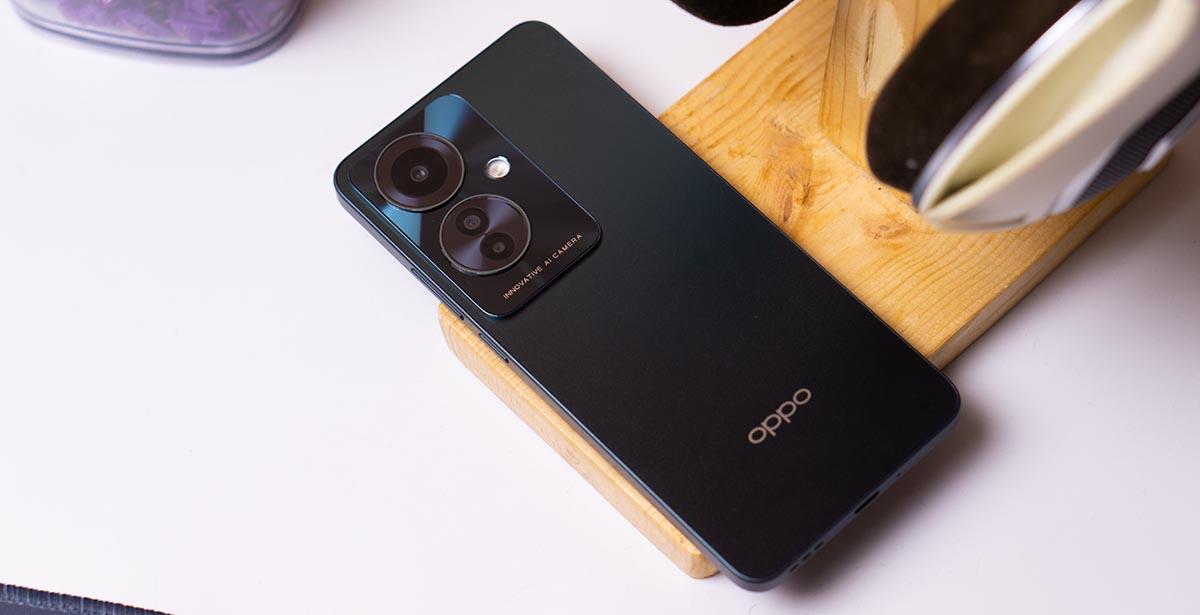
A more affordable member of the Reno11 family is being introduced in the Philippines, the OPPO Reno11 F 5G. Launching just after a month after the main numbered series, the 11 F 5G aims to bring the OPPO “Portrait Expert” experience to a more affordable price bracket.

| Chipset | MediaTek Dimensity 7050 |
| Screen | 6.7-inch AMOLED, 2412 x 1080, 120Hz, Panda Glass |
| RAM | 8GB LPDDR4X |
| OS | Android 14, ColorOS 14 |
| Rear Camera | 64MP f/1.7 OIS Main, 8MP f/2.2 Ultrawide, 2MP f/2.4 Macro |
| Front Camera | 32MP f/2.4 |
| Storage | 128GB, 256GB UFS 3.1, MicroSD |
| Network | Dual-SIM, 5G |
| Connectivity | WiFi 6, Bluetooth 5.2, USB-C, NFC |
| Battery | 5,000mAh, SuperVOOC 3.0 |
| Others | In-Display Fingerprint Scanner, Face Unlock, IP65 Dust and Water Resistance |
| Dimensions | 161.6 x 74.7 x 7.54mm |
| Weight | 177g |
| Colors | Palm Green, Ocean Blue, Coral Purple |
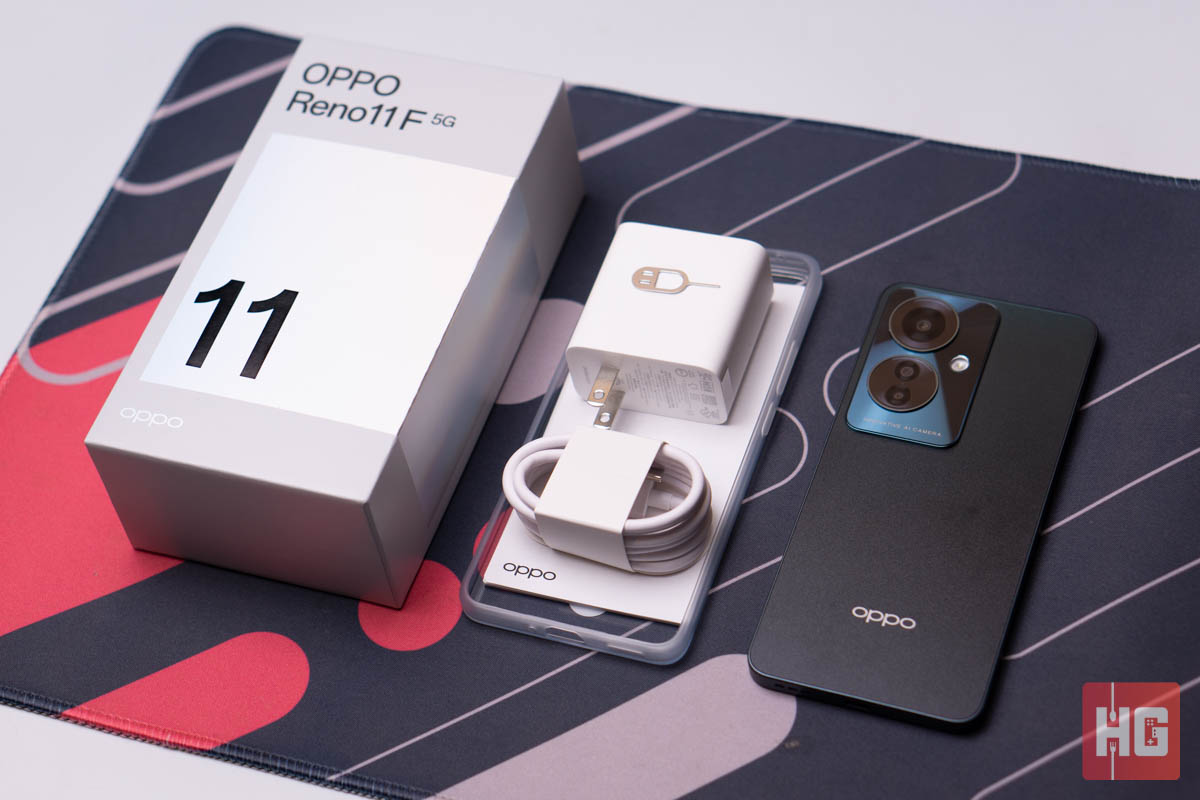
The OPPO Reno11 F 5G ships in an off-white box with its name and branding embossed at the front and sides. It is bundled with a frosted silicone case, a SIM ejector pin, documentation, a white USB-A to USB-C cable, and a 67W SuperVOOC 3.0 charger.
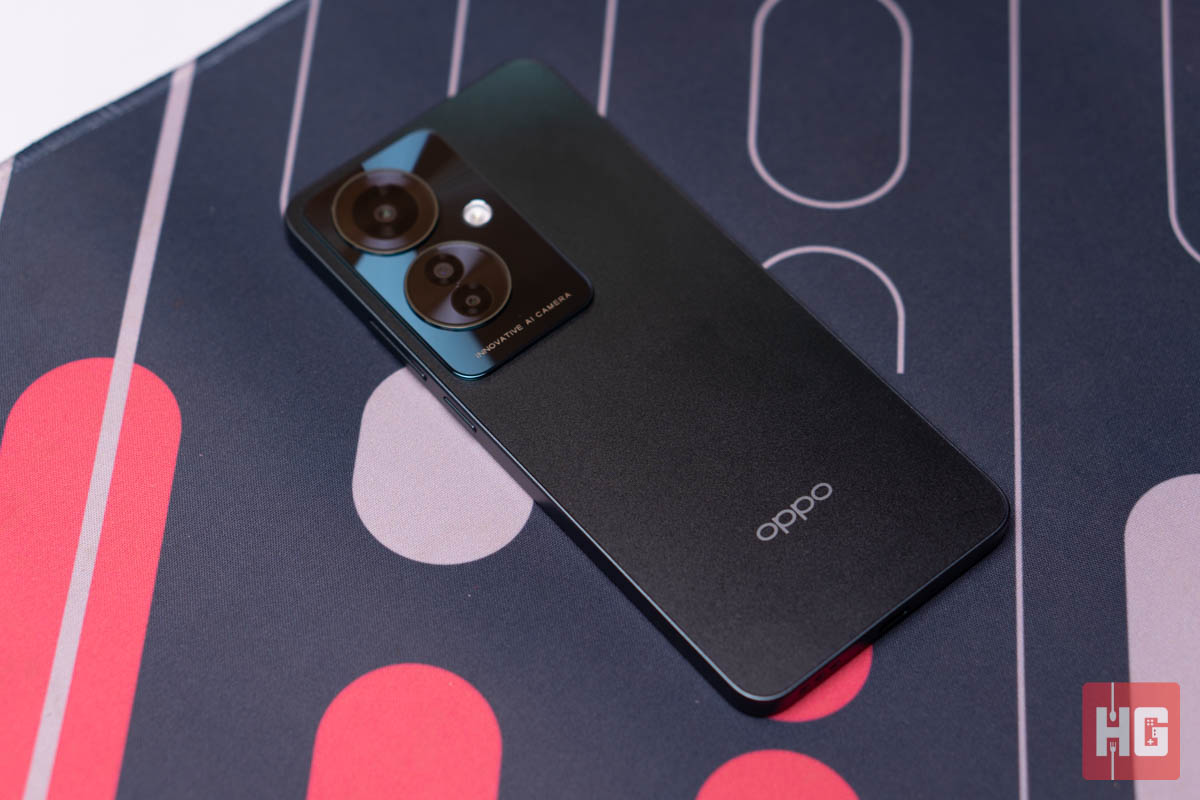
The OPPO Reno11 F 5G comes in three variants: Palm Green, Ocean Blue, and Coral Purple. The one we have for review is the more subdued Palm Green colorway. OPPO says that its design for the device is inspired by nature. The Palm Green model is closer to a dark emerald color with fine glitters throughout the rear. It is made out of matte plastic with a raised reflective platform for its cameras. The finish for the majority of rear is matte, but has a glitter effect if hit with light.
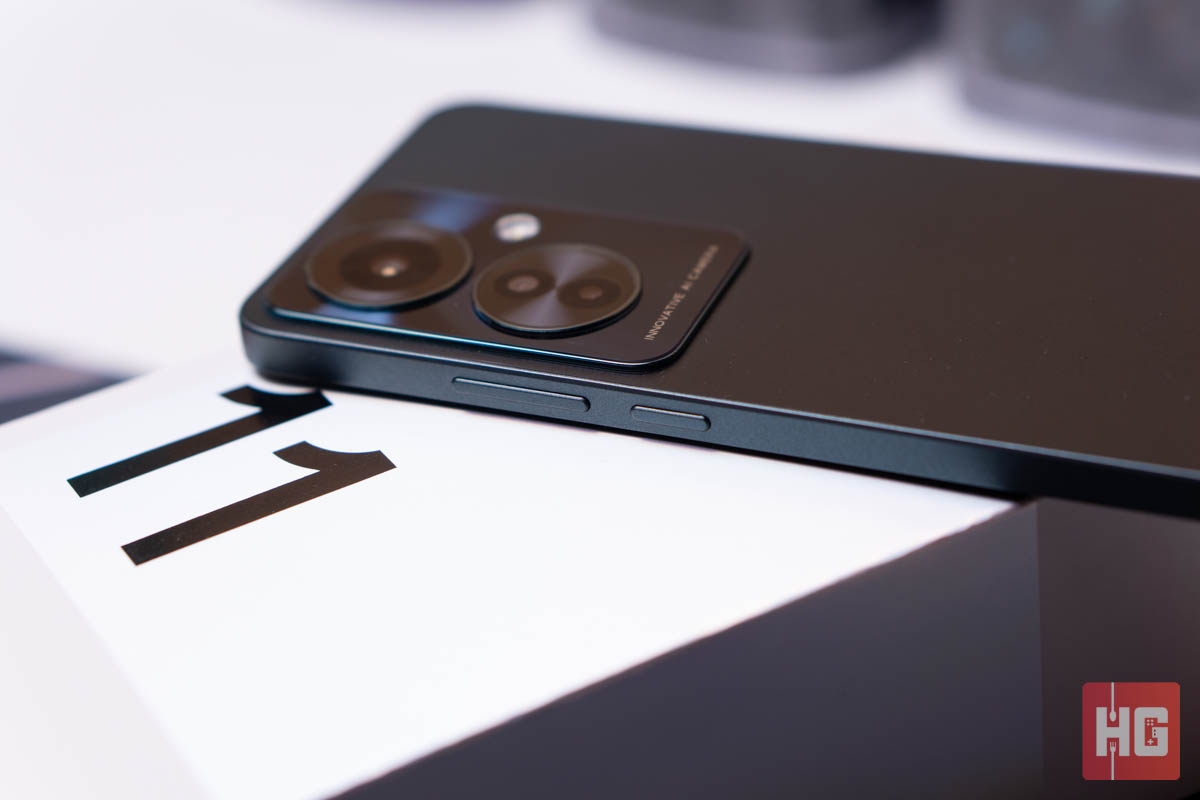

Weighing in at only 177g, the Reno11 F 5G feels good in the hand and is fairly light to handle. Its sides are flat with rounded corners with all of its tactile buttons placed at the right-hand side. Popping out its SIM tray at the left-hand side reveals a hybrid tray that can house 2 SIM cards or a single SIM card with a MicroSD card.
OPPO says that the device is rated for IP65 dust and water resistance, which should increase chances of surviving dust or water damage. Meanwhile, its volume key and power button are rated at 100,000 and 200,000 presses, respectively.
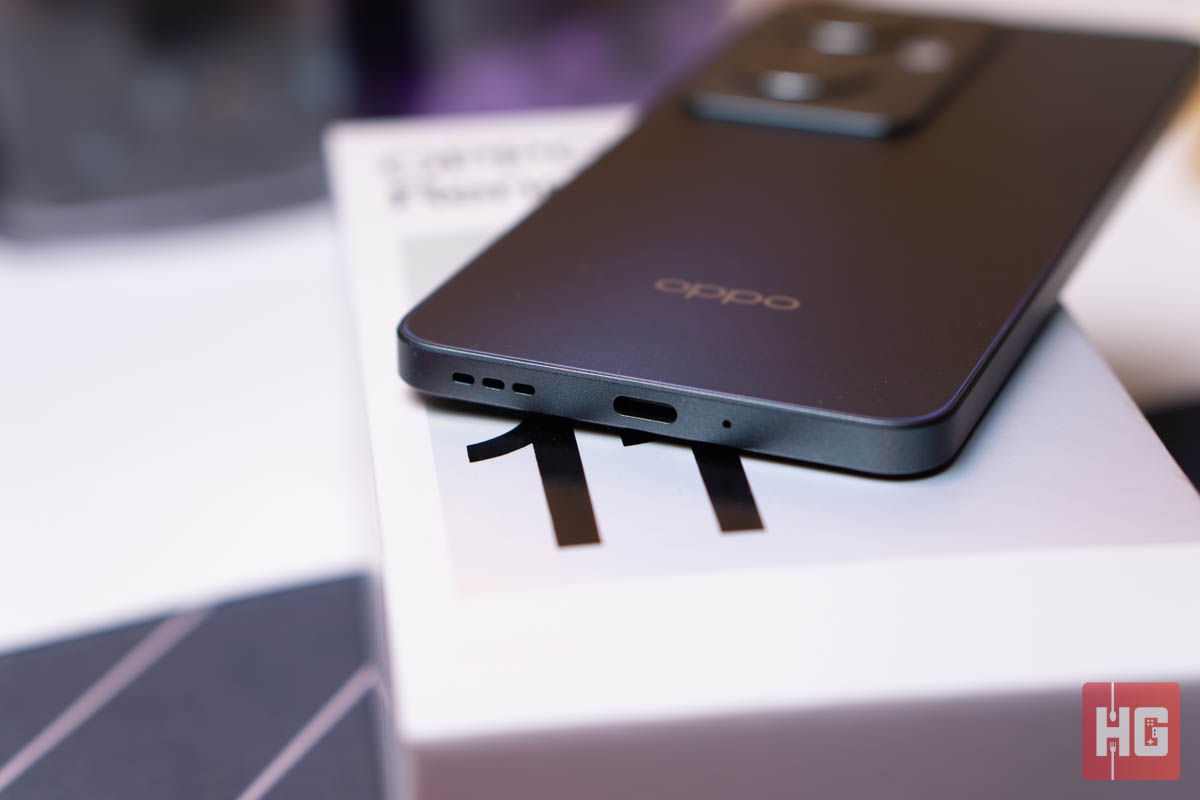
Right at the bottom are its USB-C port for data and charging, and a bottom-firing speakers. There is no 3.5mm audio jack to be found anywhere – an unfortunate “feature creep” that’s slowly becoming a norm even on midrange smartphones.
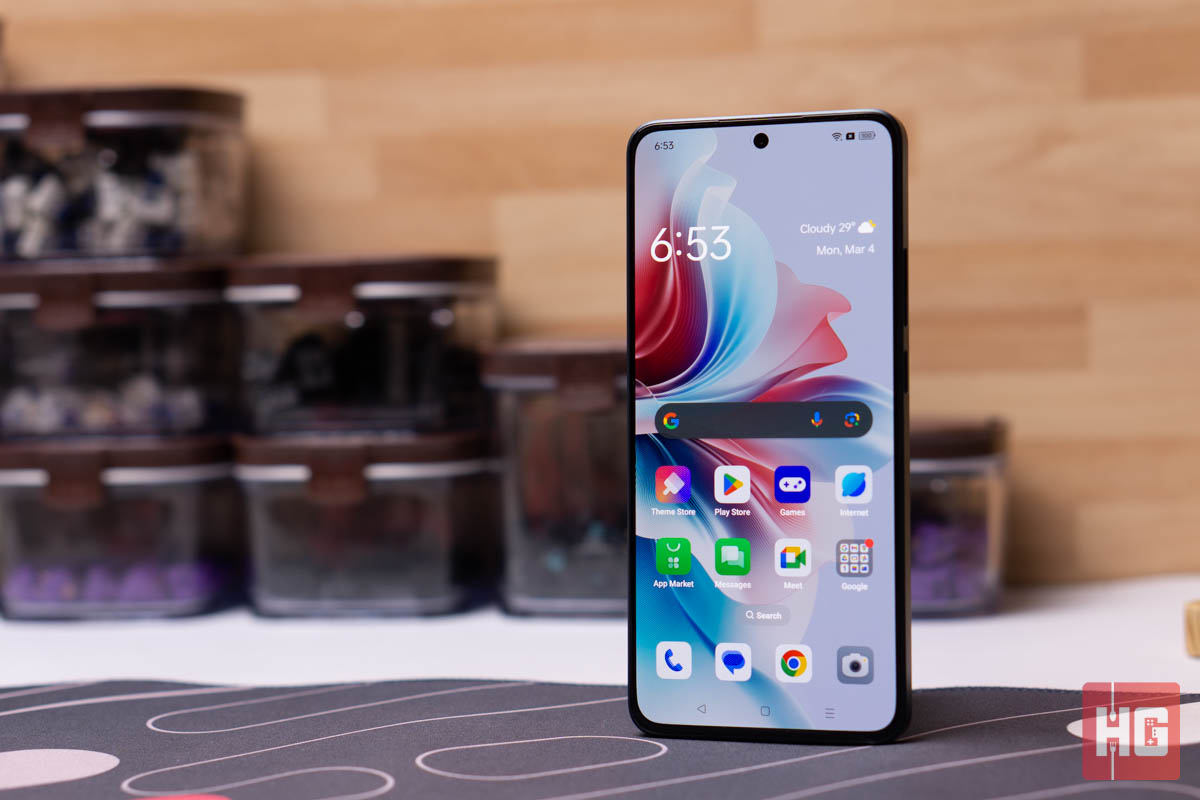
OPPO equips the Reno11 F 5G with a 6.7-inch 2412 x 1080 120Hz display. Usage is smooth thanks to the fast refresh rate, but you can tune it down to the standard 60Hz if you want the battery to last longer. Alternatively, you can choose what apps – such as games – will use 120Hz mode via the display settings menu.
Images look fantastic on its display thanks to its balanced colors. As always, contrast and details look great on an AMOLED display. Its size and resolution are just the right pair for the device. Brightness is slightly lower than your average AMOLED panel rating in at just 521.21 cd/m2, but it will still be usable outside even in direct sunlight.

The smartphone relies on a single bottom-firing speaker for external audio. Performance is surprisingly good if you stick to moderate volumes as it can pump out a decent amount of bass with clear vocals. Maxing out the volume makes the audio sound harsh and tinny, and this is made worse if you try to push it to its 300% setting.

Running on the OPPO Reno11 F 5G is the ColorOS 14 based on Android 14. There has been a bit of a redesign compared to previous versions with the UI being inspired by an “Aquamorphic Design” that adds animations, sounds, and colors. There are additional design languages on the UI using bubbles, capsules, and panels for activity or notifications.
Thanks to AI integration, ColorOS 14 can now automatically extract information from screenshots including photos or text. File dock allows you to transfer content in between apps with just dragging and dropping. These are useful additions to make the smartphone’s usage more seamless than before.
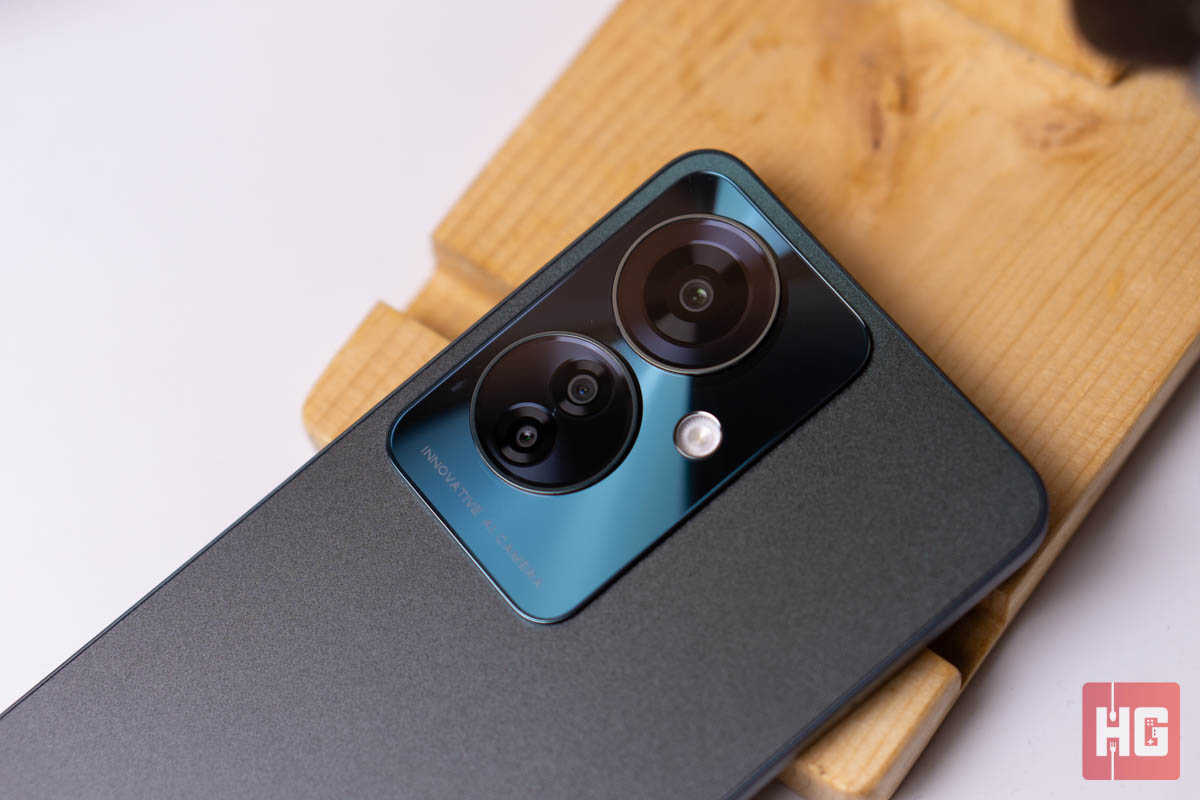
At the rear of the OPPO Reno11 F 5G are three cameras: a 64MP f/1.7 main camera, an 8MP f/2.2 ultrawide, and a 2MP f/2.4 macro lens. Placed at the top of its screen is a single 32MP f/2.4 front-facing shooter.
OPPO’s camera app doesn’t really break the mold, but it has everything you need plus a few extras. Standard modes include Photo, Video, and Portrait. Heading over to the “More” tab reveals a few more like Panorama, Hi-Res, Night, Macro, Slo-Mo, Time-Lapse, Dual-View Video, Sticker, and Text Scanner.
Its video mode has the option to toggle optical image stabilization on or off on the main shooter via the Ultra Steady option, but it is limited to 1080p60fps. The main camera supports up to 4K30fps or 1080p60fps while the ultrawide lens can do up to 1080p30fps. Its front-facing camera supports 720p, 1080p, and 4K, but all stick to 30fps.
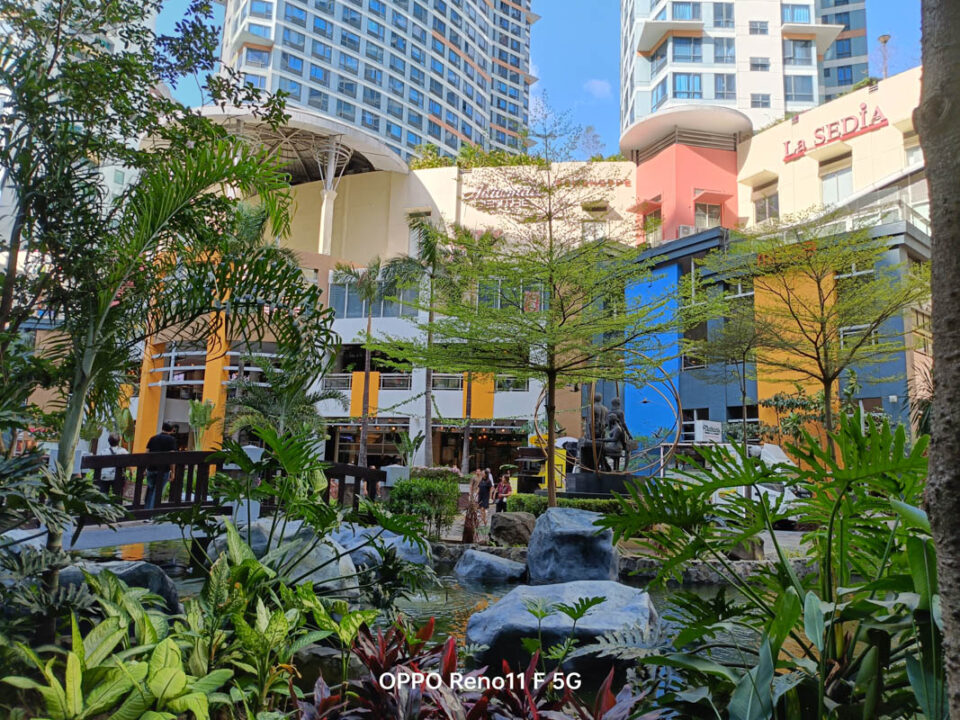
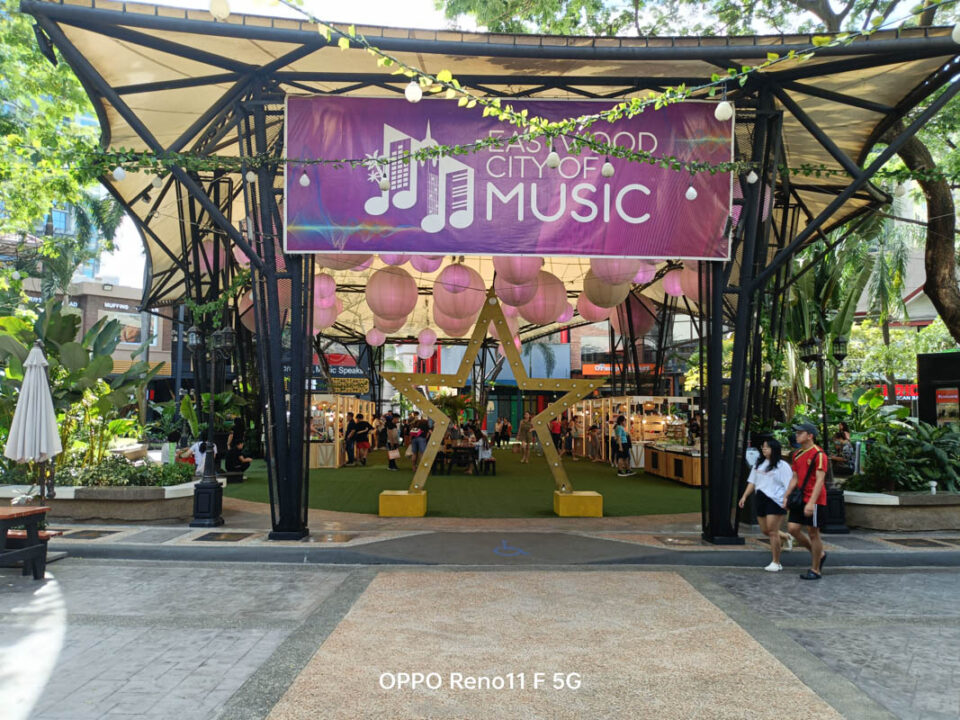


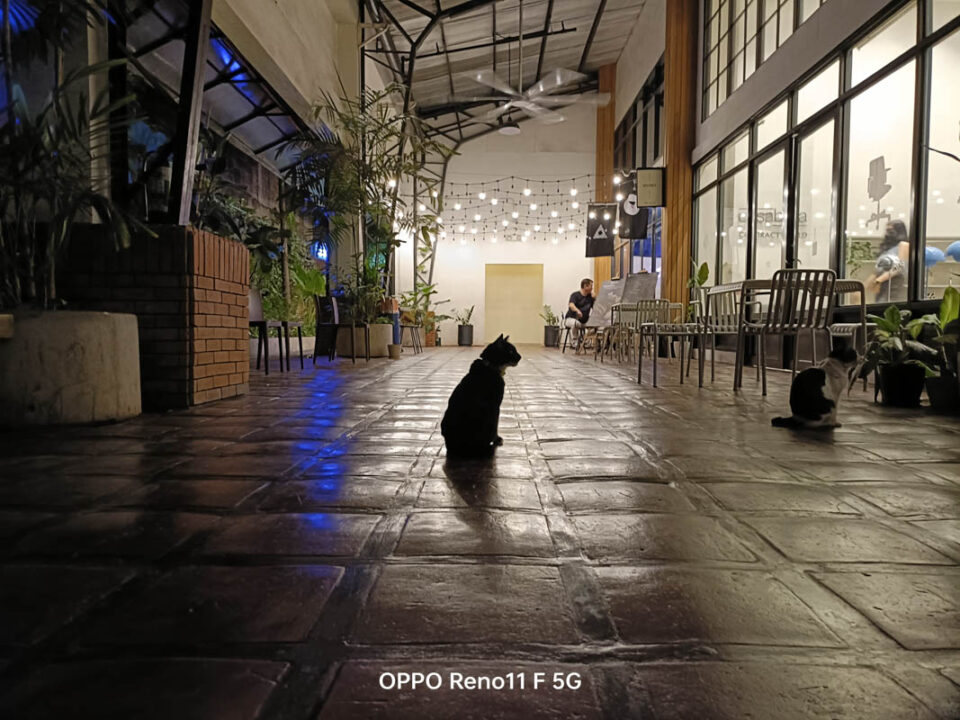




The 64MP f/1.7 main camera takes 16MP photos in its default setting. You’ll need to use its high-resolution mode to take a full 64MP snaps. Performance is great as the lens has fast autofocusing and its OIS support allow for steady photos and videos.
Daylight stills come out looking fantastic. They have great detail, good contrast, and just the right amount of color boosting to make them pop. The edges do look soft, but everything in the center look sharp.
The same can be said on low-light snaps – the center is well-detailed with a slight fall off in sharpness at the edges. Shadows do look crushed and some of the details, but there is decent HDR performance to be found here.
Its portrait mode is decent, though there is room for improvement. It can smartly separate the subject and background when processing, but some of the finer details can be lost especially hair. There’s also a sharp fall off instead of a gradual blur at the edges.
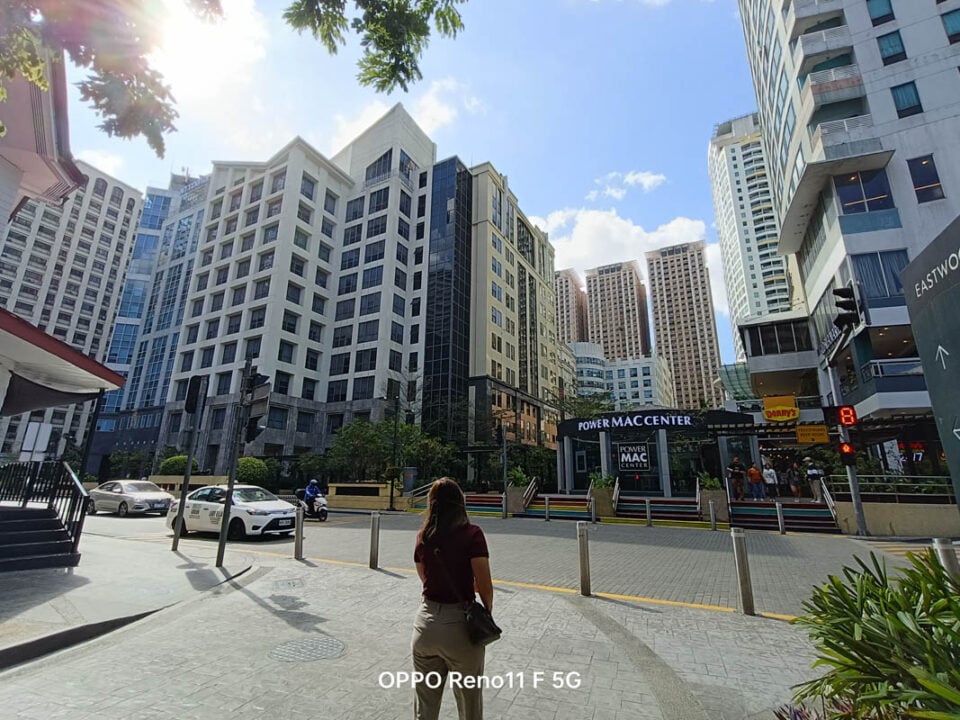


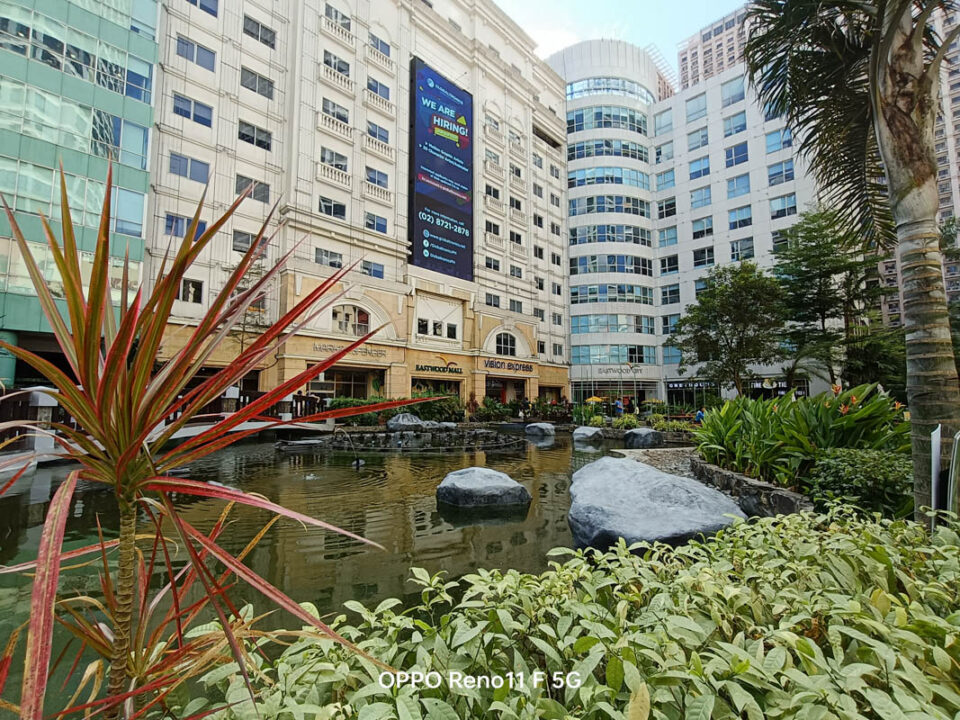
Its 8MP f/2.2 ultrawide shooter has significantly less pixel count than the main camera, but it can still perform well if the scene is right. There is some loss in detail due to the lower pixel count, but photos remain detailed so long as there is good lighting. Post processing can be a bit aggressive making some photos look “crunchy” due to the overly increased contrast.
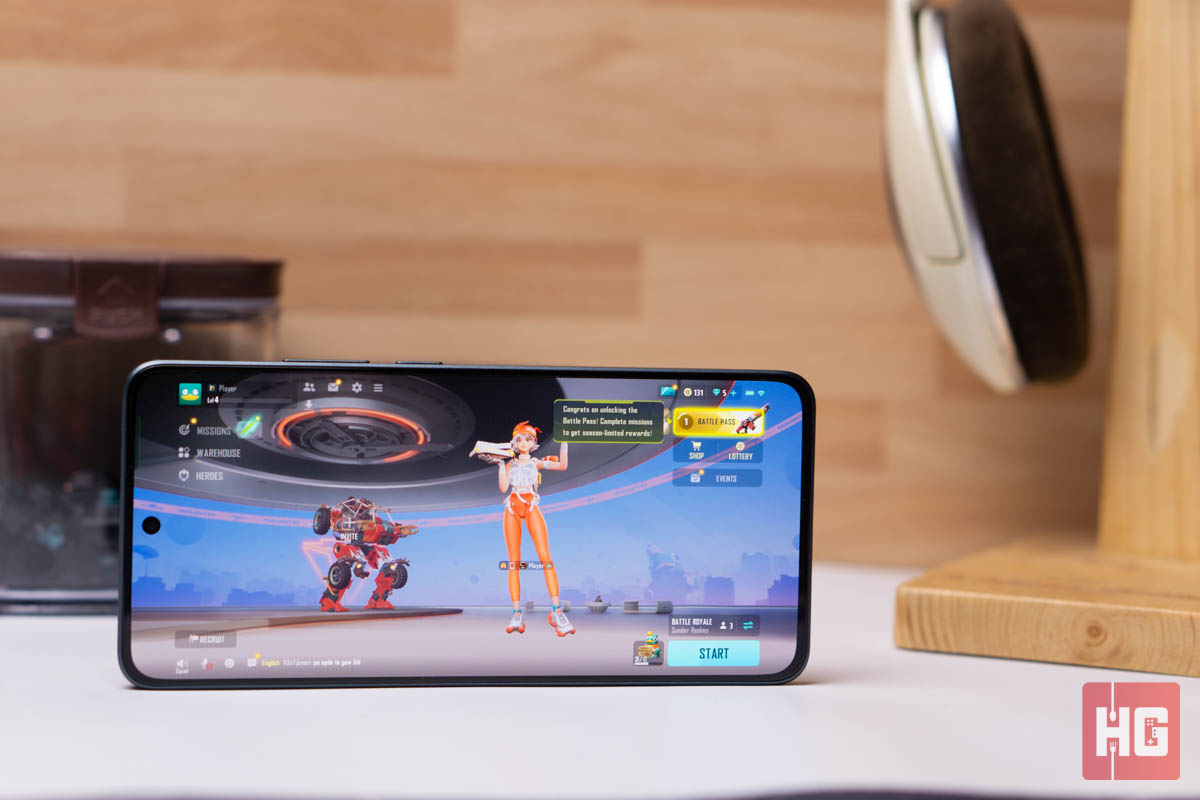
Much like the OPPO Reno11 5G, the Reno11 F 5G is powered by the MediaTek Dimensity 7050 platform. Its chip is complemented 8GB of LPDDR4X RAM and up to 256GB of internal storage. Daily use is fluid with rare drops in performance even when there are a lot of apps open in the background.

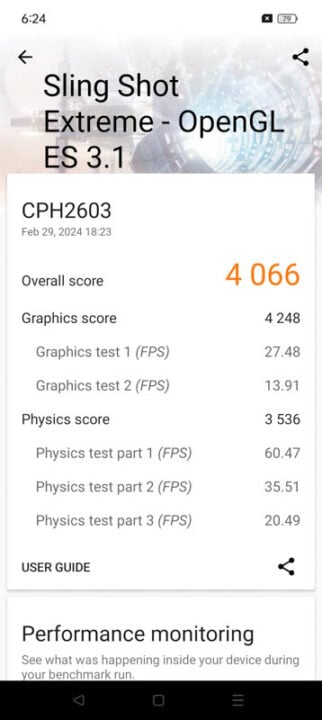




Benchmarks figures are nothing to scoff at even though the smartphone comes with a chip designed for midrange smartphones. AnTuTu with 3DBench Lite scores the Reno11 F 5G at just north of 600k while PCMark Work 3.0 workload places it a few points below 9,000 – not too shabby for a midrange device.
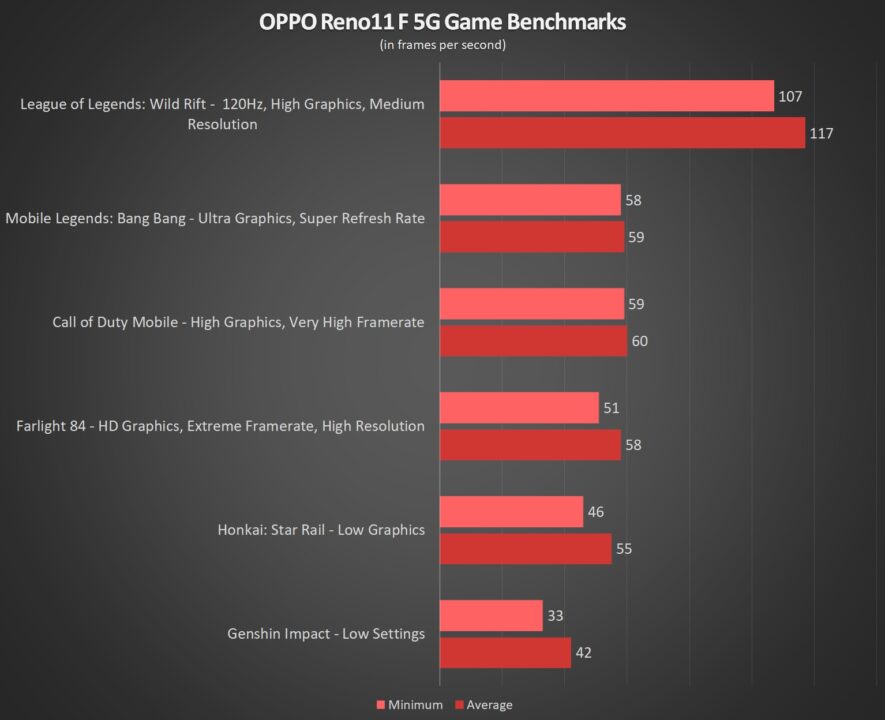
Gaming performance is pretty decent for the Dimensity 7050 as it can push most mainstream games to a steady framerate. Wild Rift has no problem taking advantage of its 120Hz screen averaging at 117fps only dipping a bit in intense combat.
Genshin Impact at low settings only achieves 42fps on average, but you will experience some drops when the action gets heavy. The same is true with Honkai: Star Rail – hubs will run steady but framerates will drop once there are heavy particle effects on screen.
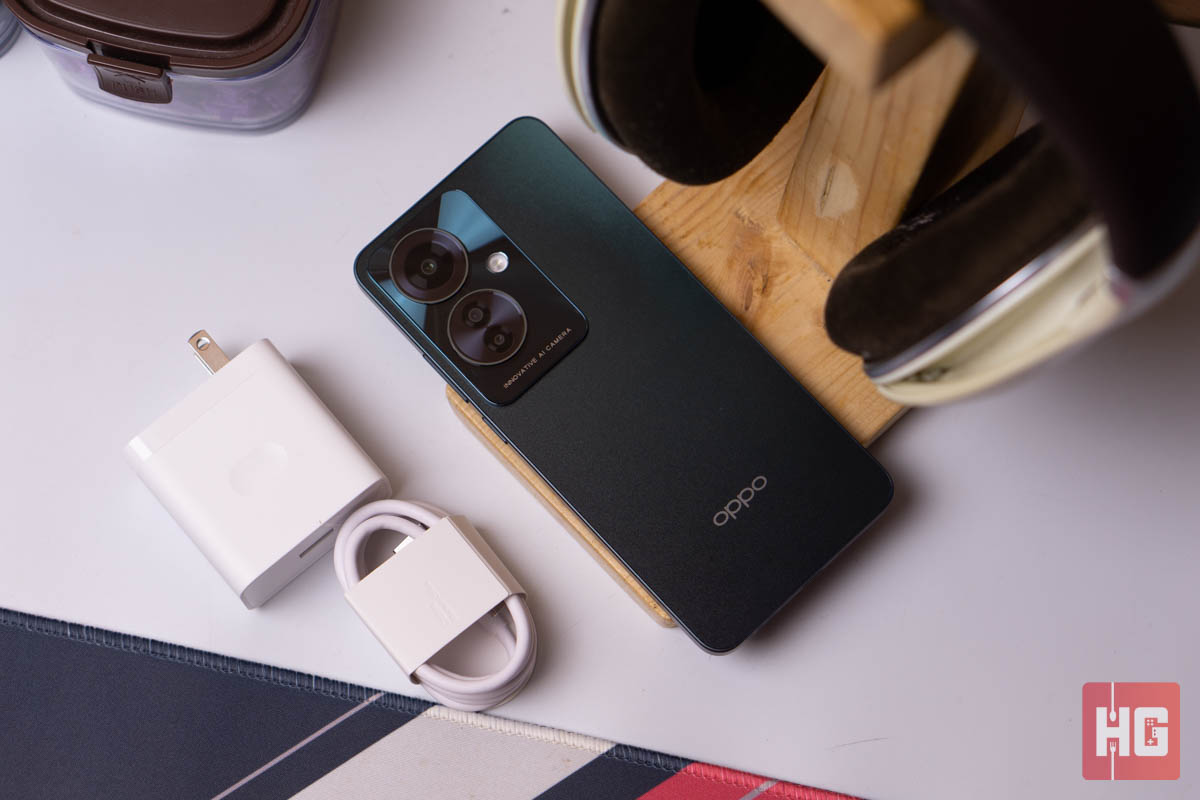
The Reno11 F 5G runs on a 5,000mAh battery, which is a pretty standard battery capacity for modern smartphones. Thanks to its efficient internals, however, the smartphone is able to easily last for a day with plenty left for the next day. PCMark Work 3.0 puts the smartphone just above 17 hours or straight use with medium volume and brightness.
Those who find themselves running out of battery will be thankful that the device supports 67W SuperVOOC charging. Wait times are kept to a minimum since the charger will be able to fill the smartphone in just under an hour from empty.
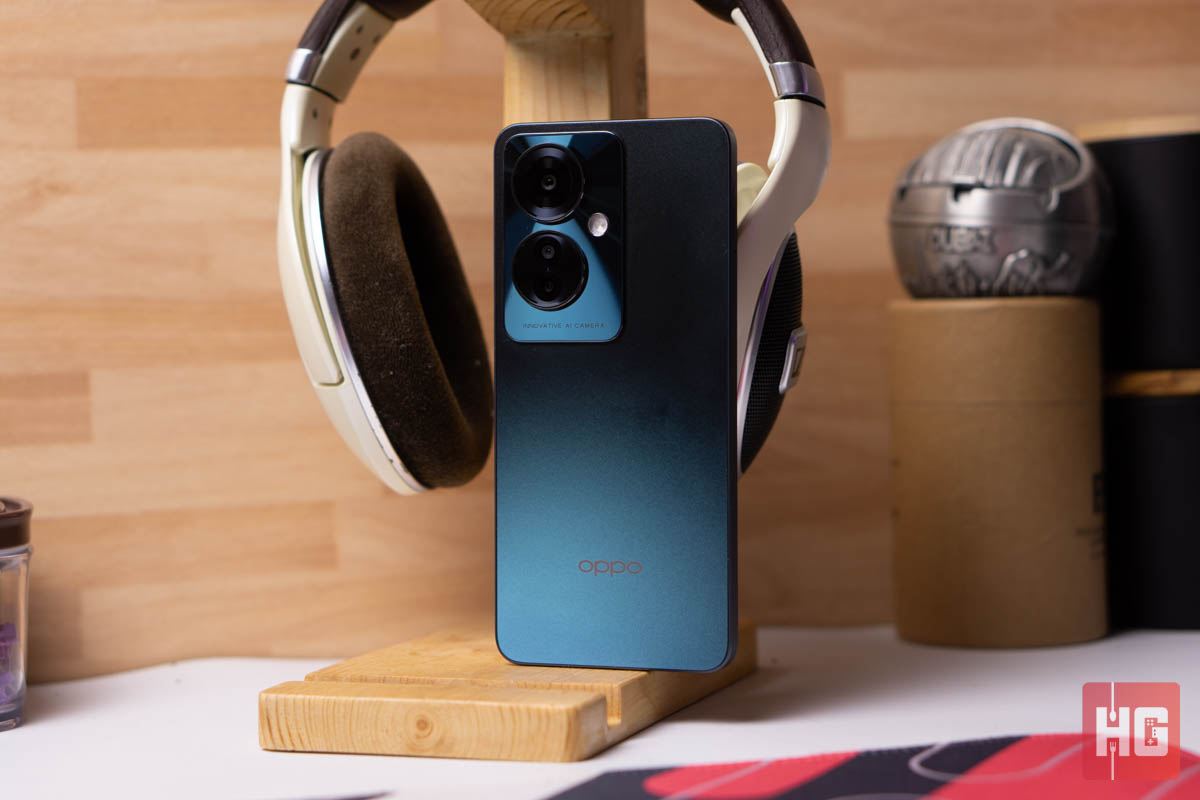
The OPPO Reno11 F 5G is a solid contender for a midrange smartphone despite being placed as an “budget-friendly Reno11” device. Performance of its cameras is solid, the chipset can get the job done even in heavier games (with some concessions like lower graphical settings), and an outstanding battery life with fast charging. OPPO has also managed to thrown in IP65 dust and water resistance.
Like most midrange devices, there are improvements to be done. Despite being tagged as the “Portrait Expert,” its Portrait Mode needs some work to have more natural fall-off and improve overall subject recognition. Frankly, the addition of at least a 5MP telephoto camera could solve the device’s portrait problems.
The 2MP f/2.4 macro camera can also go as there are other cameras present in the smartphone to get the job done. Removing the 3.5mm audio jack is also a bit of an annoyance especially for those who prefer wired headphones.
Overall, the OPPO Reno11 F 5G is a notable choice in the midrange space. Thanks to a near complete set of features including good cameras, long battery life, and decent performance. Those looking for an upgrade can put this on their shortlist.
Official pricing and availability for the OPPO Reno11 F 5G are yet to be announced in the Philippines. OPPO will be holding a blind pre-order event plus the chance to meet brand ambassador David Licauca in an early access meet and green event on March 9, 2024 at SM Dasmariñas.
More details will be announced soon as OPPO prepares for the Reno11 F 5G’s debut in the country on March 12, 2024.
